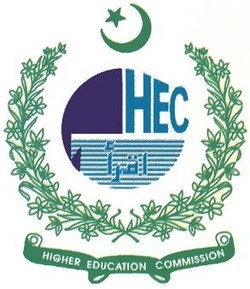Investigating Hedges and Boosters in Sports Section of National and International Newspapers: Corpus-Based Study
DOI:
https://doi.org/10.61506/Keywords:
Hedges, Boosters, Meta Discourse Markers, Hyland’s Taxonomy, Meta PakAbstract
The current study attempts to analyze the sports sections of Pakistani and American newspapers' most common hedges and boosters. The sports news stories were pulled from three prestigious newspapers, The New York Times, Al Jazeera, of America, and the Express Tribune, which is published in Pakistan. Based on Hyland's (2005) taxonomy of meta-discourse markers, the data was analyzed. From the corpus, the hedges and boosters were extracted using Meta Pak (Abbas, Shehzad, and Ghalib, 2017) software. Graphs were used to show how often certain hedges and boosters occurred. To examine the writer's point of view, the researchers dissected and analyzed these hedges and boosters. Following a manual study of these terms' collocations in the corpus, it was discovered that 'never' and 'believe' are used as boosters in national newspapers 8, and 4 percent of the time, respectively. The study's findings revealed that the most frequently occurring hedge was "about," and the most frequently occurring boosters markers were "never" and "believe." The survey also showed that 'about' and 'would' occur 18, and 9 percent of the time respectively as hedges in international newspapers' sports sections. 'Always' and 'Know' are used as boosters 12, and 13 percent of the time respectively. After the data was analyzed, it was discovered that the employment of hedge markers by both national and international writers demonstrated his position of writing with caution and care. In many circumstances, the authors are less secure in their statements and opinions because they do not want to commit themselves to the assertions. According to the research, the writer’s voice is confident when using boosters. It also demonstrated how the author's voice came across as assured and assertive. The study's findings also showed that hedges and boosters can change the tone and veracity of the writers in sports sections of national and international newspapers. According to the research, hedges, and boosters in Pakistani newspapers exhibited signs of fuzziness and uncertainty, whereas, in American newspapers, they were interpreted to signify both positive and bad things. Furthermore, it usually adopts a speculative and approximate tone.
References
Abdi,R., Rizi,M.T., & Tavakoli,M. (2010). The cooperative principle in discourse communities and genres: A framework for the use of metadiscourse. Journal of Pragmatics,42(6), 1669-1679.
Al-Ghoweri, H. A., & Al Kayed, M. M. (2019). A Comparative Study of Hedges and Boosters in English and Jordanian Arabic: Economic Newspaper Articles as a Case Study. Theory and Practice in Language Studies, 9(1), 52-59
Batool, S. F., Majeed, H., & Zahra, T. (2019). An Investigation of Hedges and Boosters in Pakistani Opinion Articles: A Corpus-based Study. Corporum: Journal of Corpus Linguistics-CJCL, 2(1), 1-12.
Cao, F & Hu, G. (2011). Hedging and boosting in abstracts of applied linguistics articles: A comparative study of English and Chinese medium journals. Journal of Pragmatics 43(11), 2795–2809
Crystal, D. (1992). An encyclopedic dictionary of language and languages. Oxford, England: Blackwell.
Hidayati, F., & Dallyono, R. (2015). The use of hedges and boosters as rhetorical devices in the construction of speeches. Linguistik Indonesia, 33(1), 53-71
Holmes, J. (1982). Expressing doubt and certainty in English. Regional Language Centre Journal, 13(2), 9–28.
McEnery, A. & Wilson, A. (1996). Corpus linguistics. Edinburgh, Scotland: Edinburgh University Press.
Talbot, M. (2010).Language and gender(2nded.). Cambridge, England: Polity.
Zafar, S. (2018). An exploration of stance in research article abstracts through boosters and hedges. Corporum: Journal of Corpus Linguistics. 1(1), 2847.


